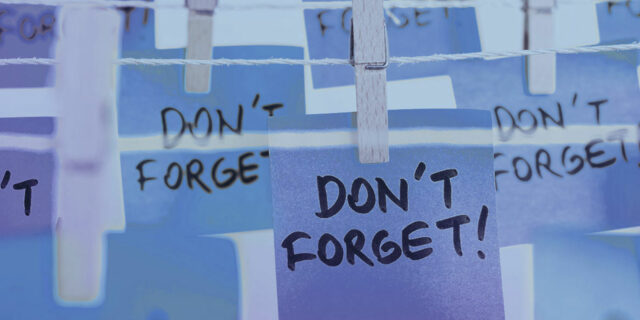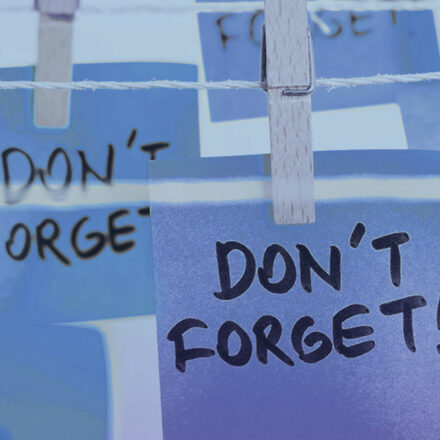Walter Isaacson:
It’s 1933, and Henry Molaison is a normal seven-year-old boy living in Hartford, Connecticut. Then one day, while outside playing in the street, he’s knocked down by a passing bicycle. His injuries don’t appear to be severe, but three years later, Henry begins to have minor seizures. At age 16, they become major seizures, and he’s forced to drop out of high school. By the time he’s 27, they are so bad, that he can no longer work or lead a normal life. The usual anticonvulsant medications aren’t working well to treat his condition. So a local neurosurgeon, named William Scoville, proposes an experimental solution. He wants to remove a substantial piece from the medial temporal lobes on both sides of Henry’s brain.
Dr. Scoville has performed this surgery before, but this will be the first time he’s done it to treat epilepsy. And he plans to remove a much larger piece, a total of roughly three inches of Henry’s brain. The operation took place on August 25th, 1953. All seemed to go well. The procedure completely cures Henry of his seizures. But in the days following the operation, it becomes clear that something is seriously wrong. Henry isn’t able to recognize the caregivers who visit his room every day, or recall conversations he has with them. His mother begins to fear the worst, and she was right.
Henry entered the hospital suffering from epilepsy. When he left two weeks later, he was suffering from a severe case of amnesia. Among the parts removed from Henry’s brain was the hippocampus, a seahorse shaped structure located deep in the middle of the brain. What few people understood at the time, was that the hippocampus is responsible for laying down new memories. So the removal of this part of Henry’s brain resulted in his amnesia. He could recall details from his childhood, before his seizures began. But he couldn’t remember what he had for breakfast, or recognize people he had met after his accident, including the doctors who saw him regularly for decades. Unfortunately, Henry would never recover. Until his death at age 82, in 2008, Henry effectively never remembered anything ever again.
Henry Molaison was an accidental trailblazer. Over the course of 50 years, he was studied more than any other person in the history of neuroscience. And out of Henry’s tragedy came a critical turning point in brain science. Neuroscientists discovered that complex functions such as learning and memory were tied to discreet regions, and the hippocampus was the area primarily responsible for creating new memories.
Today, there is still much that we don’t know about memory, but there is exciting research underway, exploring how damaged memories can be repaired, and even how painful memories might one day be erased, and we have Henry Molaison to thank for much of that.
I’m Walter Isaacson and you’re listening to Trailblazers, an original podcast from Dell Technologies.
Speaker 2:
Remember. Remember. Remember.
Speaker 3:
The brain, a pulpy mass of cells and fibers.
Speaker 4:
We hardly need to be reminded that we live in a world that is crammed with information every day.
Speaker 6:
Well, that’s what I had in mind.
Speaker 4:
Much behavior is based on learning. Here, memory comes into play.
Speaker 7:
It’s great value as a tool for extending man’s thought.
Walter Isaacson:
The first thing you should know about how memories are made, is that much of what you think you know is probably wrong.
Lisa Genova:
The general public doesn’t really have a sense of what memory is, because we tend to think, “Oh, there’s a memory bank.”
Walter Isaacson:
Lisa Genova is a neuroscientist and writer. Her most recent book about memory is called, Remember: The Science of Memory and the Art of Forgetting.
Lisa Genova:
People might think of them as like pulling up files in a file cabinet or hitting play on a DVD player or hitting play on YouTube, and it’s none of those things, and it’s different than a lot of the other functions in our brain.
Walter Isaacson:
We know that the occipital cortex in the back of our heads is responsible for our vision. We know that we hear, because of the auditory cortex at the side of our heads, but memory doesn’t work that way.
Lisa Genova:
Memory is not located in any one place. It is located throughout the disparate connections that are linked together to form the neural circuit of that memory. And it could be sight, smell, taste, emotion, language, meaning, all of those things that reside in very different parts of your brain become connected in a neural circuit. That’s the memory.
Walter Isaacson:
But not all memories are created equal. We have different kinds of memory, and they all navigate the pathways of the brain in different ways. We absorb huge amounts of information every day, but we actually retain very little. Let’s say I told you the score of the basketball game I watched last night. That information will enter the frontal cortex of your brain, and it becomes part of what researchers call your working memory. Think of the frontal cortex as a gateway, or lobby, to the rest of your brain. Most of the information that arrives there doesn’t go anywhere else.
Lisa Genova:
So working memory doesn’t contain a lot of room and it doesn’t last for a long time. So information is held in your working memory for about 15 to 30 seconds, and it only keeps about seven things in there.
Walter Isaacson:
Genova says, that the reason you most likely won’t remember the score I’ve told you for longer than 15 or 30 seconds, is because you have no reason to remember it, and there’s no meaning or emotion attached to it.
Lisa Genova:
So working memory is small. It’s a little bit of information can get in there, but then it’s going to take meaning, right, sentences and words have meaning. It’s going to take meaning. It’s going to take emotion. It’s going to take something special for our brains to say, “Hey, I want to move out of the lobby, and go into the other room where I’m going to get processed into something that can stay.”
Walter Isaacson:
For a working memory to turn into something more permanent, often referred to as episodic memory, it needs to move on to the hippocampus. That wasn’t possible for Henry Molaison, and that’s why short-term working memories were the only new memories he had.
Robert Hampson:
So what happens when we make a memory is that the neurons, the cells in the hippocampus, become electrically active, in patterns that are unique to the information that is to be remembered.
Walter Isaacson:
Robert Hampson is a professor of neurology and pharmacology at Wake Forest University.
Robert Hampson:
So the hippocampus is involved in creating a code for memory, and then that code is what gets stored in other parts of the brain. When we recall memory, we have to go and find that code.
Walter Isaacson:
But as we’ve all experienced from time to time, that code is not always available for retrieval when we want it. Hampson says, there’s one main reason why our memories are often not available to us.
Robert Hampson:
The number one cause is distraction. We’re not paying attention, and we don’t encode the memory sufficiently for it to be stored and retrieved after a long interval. The next thing that happens is, the hippocampus is simply not talking to the other brain areas with the strength and the fidelity of when memory works actively.
Walter Isaacson:
The quest to improve our memories is as old as memory itself. In ancient Greece, being able to recite long speeches from memory was critical to achieving success in politics. Greek poet, Simonides, developed a memory building technique 2,500 years ago that’s still employed today. Journalist Jonathan Fore used it in 2006 to win the USA Memory Championship.
Jonathan Foer:
Essentially, his great discovery was, if you use a piece of architecture in your mind’s eye as a storehouse of memories, you can cram a lot of information in there, and you can make that information easy to pull back out later. It’s a really weird trick. It doesn’t sound like it would work, but it works exceedingly well.
Walter Isaacson:
The technique Simonides invented is called the Memory Palace. Foer wrote about it and in his book, Moonwalking with Einstein: the Art and Science of Remembering Everything. Let’s say you have three items you want to buy at the grocery store. To build your Memory Palace, first think about what your house looks like. Then create a unique mental image for each of the items on your list. Put the butter on your bed, the milk on your sofa, the eggs on your front steps.
Jonathan Foer:
As you’re walking through that imaginary building, which could be based on a real building, you’re depositing images of the things that you want to remember. You’re keeping those images in order, and those images represent the information you want to pull back out later.
Walter Isaacson:
The memory palace works, because we’re better at remembering spatial images than any other kind of information. By encoding our memories as images, and then translating them back into words and numbers, we’re more likely to be able to retrieve those memories when we go to the grocery store.
The Greeks were developing theories about memory more than 2000 years ago. But it wasn’t until the late 19th century that researchers began to connect theories to actual experiments. The first to do so was a German psychologist named Hermann Hermann Ebbinghaus.
In 1885, Ebbinghaus conducted an experiment on himself. He created 2300 of what he referred to as nonsense syllables, all of them three letters long. He grouped them into lists, looked at each syllable for a fraction of a second, then went through the list again, until he could recite it correctly.
Dan Schacter:
He would note the number of trials that it took him to learn a series of nonsense syllables, and his measure of memory was what was called savings. Namely, if he was able to learn a list of nonsense syllables the second time, in fewer trials than the first, then that indicated the presence of memory.
Walter Isaacson:
That’s Dan Schacter, a professor of psychology and memory researcher at Harvard University. Schacter believes, that the most important contribution that Ebbinghaus made to memory research was not about how we remember, but how quickly we forget.
Dan Schacter:
So he measured his memory for the nonsense syllables at various times after he learned them. And what he saw, was that there was a very steep drop off in his memory in the minutes and hours following initial learning. Then, the rate of forgetting slowed down over time. He continued to forget, but not nearly as quickly as soon after learning. And that curve of forgetting that he produced is probably his most important legacy. The basic idea that there’s a lot of forgetting soon after initial learning, and that the rate of forgetting then slows down over time has held up.
Walter Isaacson:
Ebbinghaus’s experiments were groundbreaking, and launched a wave of interest into how memories were encoded in the brain. But very little attention was paid to how we retrieve those memories. Why do we remember some things better than others? That was one of the questions that a German zoologist named Richard Semon set out to explore in the first decade of the 20th century. His answer, which was revolutionary at the time, was that we need to pay attention to more than just the conditions under which memories are encoded. We also need to understand the conditions present when memories are retrieved.
Dan Schacter:
Semon understood the conditions of retrieval could be very influential in determining whether you remembered an experience or not. In other words, realizing that memory might be good or bad, whether you remembered an experience depended critically on retrieval conditions.
Walter Isaacson:
Semon’s work on retrieval conditions has led researchers in some surprising directions. For example, in the 1970s, they discovered a phenomenon known as state-dependent memory. The idea here, is that you can retrieve memories more effectively if you can replicate the condition you were in when you encoded the memory in the first place, even if you were drunk or high on drugs.
Dan Schacter:
If you reinstate, at the time of retrieval, the state from encoding, you might think, “Oh.” You’re always going to be worse off, if you’re trying to remember information in a state where you know, you’ve been smoking marijuana or drinking alcohol. But what this research has shown is that, those retrieval conditions, if they match the encoding conditions, can actually promote memory. Semon was onto this basic idea, that retrieval conditions really had a huge impact on memory. Others didn’t see it at the time.
Walter Isaacson:
By the middle of the 20th century, memory researchers were grappling with another fundamental question. When are memories actually formed?
James McGaugh:
Now, there had been a little smidgen of evidence, that memories are not formed instantly at the time of learning, but rather, the processes underlying learning occur for a while afterwards, and they consolidate over time. This is called the consolidation hypothesis.
Walter Isaacson:
That’s James McGaugh. He began researching memory formation as a graduate student in the 1950s. Back then, conventional wisdom was that, memories were formed at the time of learning. But through a series of experiments, McGaugh discovered that lasting memories are not stored instantly, but consolidate over a period of time.
James McGaugh:
See, that’s the fundamental thing here, is that when we learn something, the processing doesn’t stop when the event stops. It goes on, and we can tap into that, and we can use that then, to understand the processes that are underlying the formation of memory.
Walter Isaacson:
Today at 91, James McGaugh is the Distinguished Emeritus Professor of neurobiology and behavior, at the University of California Irvine, and he continues to be fascinated by how memories are formed and lost. If memory formation is an ongoing process, what determines whether we will be able to retrieve those memories long after the event is over?
McGaugh’s research builds on Richard Semon’s initial work on memory retrieval. McGaugh has shown, that the more emotionally arousing the experience, the more likely we are to remember it. That’s why we can recall, in considerable detail, where we were when we received news of important events, like the attacks of September 11th.
This is not a new idea. In 1620, the English philosopher and politician, Sir Francis Bacon, observed that our memories are assisted by anything that inspires fear, wonder, shame, or passion. But McGaugh was able to link that idea with the specific stress hormones that cause your brain to consolidate these experiences.
James McGaugh:
These stress hormones that we release to ourselves, we have no control over them, they are automatically released, they play a critical role in determining how well you will remember any particular experience. For example, I’m going to say something which is not true, absolutely not true, but I’m going to say it to you anyway. Of all the people who have ever interviewed me, you were the most stupid one. If I didn’t give you the preamble to that, if I just said that, you’d never forget that. And in part while you never forget it is because of the hormones that rushed into your brain, and activated processes in the brain that underlie the storage of that information, or what we say, the consolidation of that in information. And it goes on all the time, all day.
Walter Isaacson:
Today, the idea that our brains are more likely to retain memories of emotionally charged events is widely accepted. Millions of people suffer from post-traumatic stress syndrome, because they are haunted by terrible memories that they can erase. But now, there’s hope that one day, those terrifying memories could be transformed into something harmless.
Daniela Schiller:
In 2000, there was a seminal paper after that study, hundreds of studies followed.
Walter Isaacson:
That’s Daniela Schiller, a professor of psychiatry and neuroscience at the Icahn School of Medicine in New York. For most of the 20th century, it was believed that memory formation was a onetime thing. That once a memory is made, it will remain in our brain unchanged forever. Schiller is part of a group of researchers, who over the past 20 years, have made dramatic breakthroughs in our understanding of how our brains form memories, and how we can reprogram, or essentially erase, unpleasant ones.
Daniela Schiller:
What the paper showed is, these animals, they learn to associate an auditory tone with an electric shock. So they learned, whenever the tone comes up, to freeze, because they know the shock, it’s going to come. This is how the memory is formed in a lab.
Walter Isaacson:
After mice were conditioned to associate a specific tone with a shock, researchers injected a drug into their brains.
Daniela Schiller:
They inserted the drug directly to the amygdala, which is a region in the brain that is very important for that learning, the type of association related to fear, and that managed to block the memory. So the animals came back a day later, and also a few days later, and when they heard the tone, they didn’t freeze. Meaning, they modified the original memory.
Walter Isaacson:
By blocking the memory, they proved that memories have to reconsolidate, or be rebuilt, every time they were recalled. And during this reconsolidation, memories can be altered, or even erased. When Schiller came to NYU in 2004, she was asked to translate that animal research to humans. But instead of using drugs to modify memory, Schiller used behavior therapy. She demonstrated that, if therapy could be initiated during the 10 minutes it takes to reconsolidate a memory, all memories could be permanently rewritten, minus whatever it was that was causing the trauma.
Daniela Schiller:
This is what is exactly what’s so fascinating about reconsolidation, that it demonstrates this mechanism of continuous change. As if memories always change, they’re not permanent, they’re not fixed. And you definitely don’t remember the original event. You probably remember your last retrieval of it, or your last version of it. And what’s interesting about it is that, it seems to be the natural function of memory. It’s like it’s supposed to change. It’s supposed to not be accurate. And that’s what’s interesting, we’re built to revise our memories.
Walter Isaacson:
People who suffer from PTSD often find their bad memories are triggered by specific smells, or sounds, or locations. The promise of Schiller’s research, and the work of her colleagues, is that one day, by using behavioral therapy, or pharmaceutical intervention, people with PTSD could be exposed to those same triggers, and not suffer the trauma previously associated with them. The new memories will essentially overwrite the old ones. The memories don’t disappear, but they lose their toxicity.
Of course, for millions of people suffering from brain injuries, or diseases like Alzheimer’s, the challenge is not remembering too much, but remembering too little. Researchers have spent decades trying to find ways to slow down or reverse memory loss. Attempts to find a pharmacological answer to the problem have proved frustrating. But now, a team, led by Robert Hampson at Wake Forest University, may have discovered a way to strengthen, or restore our ability to make new memories. He’s doing this by hacking into the brain and writing code.
Robert Hampson:
We had discovered in animals, that we could record signals that were unique, that were different, based on the different things that the rats were doing. So from this, we started looking and saying, “We can identify what the animal has remembered about the behavior tasks that they were trying to do.” Which means, we now have a code for at least one piece of information that they are remembering. And that’s where the whole idea of looking at these codes for memory came from.
Walter Isaacson:
When we encounter new information, neurons are activated in our hippocampus. Electrical signals are sent to other neurons, and this pattern is encoded in our brains. But if our hippocampus is damaged by injury or disease, the neurons can have trouble encoding the memory, so the memory never actually forms.
Hampson is trying to overcome that problem, by building a memory prosthesis, that uses electrodes to zap neurons into the hippocampus during memory formation, and improves the person’s ability to recall information later.
To test the idea on humans, Hampson got permission to work with a small group of patients with epilepsy. They already had electrodes inserted into their brains, so that doctors could study their seizures. These patients were given a memory gain, as the electrodes recorded their brain activity.
Robert Hampson:
We show them pictures, and we asked them to remember a picture. And then, about 30 to 90 minutes later, we quizzed them on which were the pictures we told them to remember? We also show them pictures that were not ones we asked them to remember, and we show them pictures they hadn’t seen before, and we compare how they perform with the pictures they were told to remember. Some of those pictures, we actually stimulated a pattern into their hippocampus. That’s what we call encoding.
Walter Isaacson:
Once researchers determined the unique pattern of code in the patient’s brain, they activated the electrodes, to deliver that same pattern back into the brain, while the patient was trying to form a new memory. The electrodes gave their brains the extra boost they needed.
Robert Hampson:
The results were amazing. We were seeing on the order of about 35% improvement in the ability to remember what they had seen.
Walter Isaacson:
Hampson hoped that one day, the memory prosthesis could be used to help people with various memory disorders. But there are many medical and ethical hurdles that still need to be overcome, before doctors start firing electrodes inserted into people’s brains. The one thing we know for sure though, is that the number of people suffering from mild or severe memory loss is bound to increase as our population ages.
The total number of Americans over 65, with dementia, is expected to rise from roughly 7 million in 2020, to 9 million in 2030, and nearly 12 million in 2040. And aging isn’t the only threat to our memory. At a time when just about all the information in the world is a few keystrokes away, we simply don’t have to count on our memories as much as we used to. But there’s more to memory than what we can retrieve from a search engine.
Our memories are like a lens that helps us process the world. They help us make sense of the present moment. They define us, for better or worse. And that’s why the work that’s being done to help us retain good memories, and exercise the bad, is so important. So take good care of that incredibly complex memory machine inside your head. Eat well, exercise, and get plenty of rest. Keep challenging your brain. Play games, do puzzles, and constantly be acquiring new knowledge. Think about all the new knowledge you acquired listening to this podcast. Now, you just have to remember it.
I’m Walter Isaacson, and you’ve been listening to Trailblazers, an original podcast from Dell Technologies, who believes there’s an innovator in all of us.
If you want to learn more about the guests in today’s episode, please visit delltechnologies.com/trailblazers.
Thanks for listening.
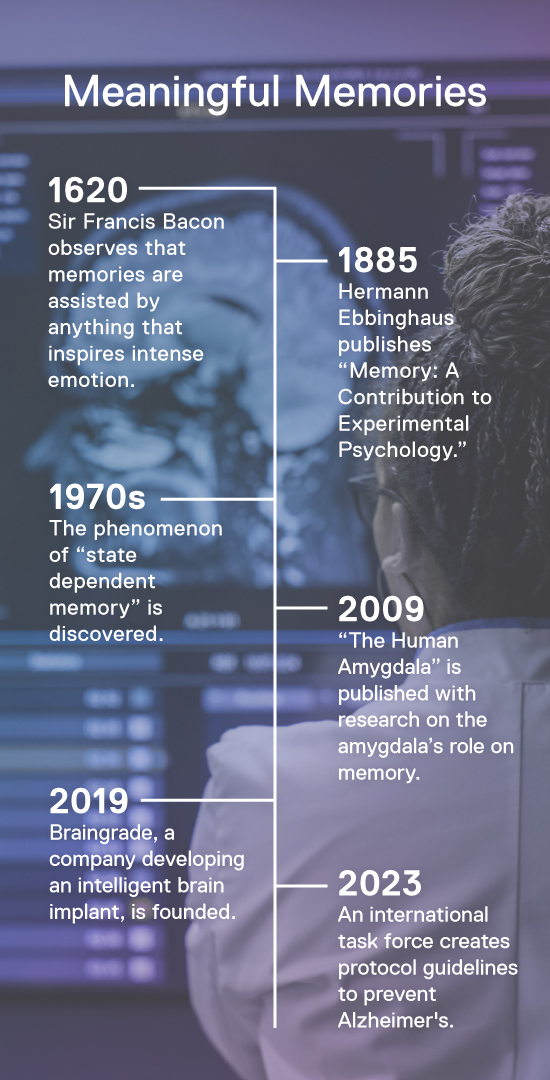 Do you ever go to the store with a plan to buy certain items, then return home only to realize you forgot one? Sometimes, when we’re distracted, we don’t encode our memories enough to retrieve them when we want to. Memory creation, storage and retrieval are complex processes that happen inside a complex organ. But ancient techniques can help us improve our memory recall and decades of research can provide hope for PTSD and Alzheimer’s treatments. Expand your mind on this episode of Trailblazers.
Do you ever go to the store with a plan to buy certain items, then return home only to realize you forgot one? Sometimes, when we’re distracted, we don’t encode our memories enough to retrieve them when we want to. Memory creation, storage and retrieval are complex processes that happen inside a complex organ. But ancient techniques can help us improve our memory recall and decades of research can provide hope for PTSD and Alzheimer’s treatments. Expand your mind on this episode of Trailblazers. Lisa Genova
is a valedictorian from Bates College with a degree in Biopsychology and has a Ph.D. in Neuroscience from Harvard. Acclaimed as the Oliver Sacks of fiction and the Michael Crichton of brain science, she is the New York Times bestselling author of Still Alice, Left Neglected, Love Anthony, Inside the O’Briens, Every Note Played, andRemember: The Science of Memory & the Art of Forgetting.
Lisa Genova
is a valedictorian from Bates College with a degree in Biopsychology and has a Ph.D. in Neuroscience from Harvard. Acclaimed as the Oliver Sacks of fiction and the Michael Crichton of brain science, she is the New York Times bestselling author of Still Alice, Left Neglected, Love Anthony, Inside the O’Briens, Every Note Played, andRemember: The Science of Memory & the Art of Forgetting.
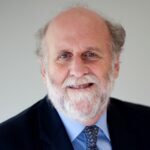 Daniel L. Schacter
is a Professor of Psychology at Harvard University. His research has explored the nature of memory and imagination using both cognitive and neuroimaging methods. His book The Seven Sins of Memory was named a New York Times Notable Books of the Year, and received the American Psychological Association’s William James Book Award.
Daniel L. Schacter
is a Professor of Psychology at Harvard University. His research has explored the nature of memory and imagination using both cognitive and neuroimaging methods. His book The Seven Sins of Memory was named a New York Times Notable Books of the Year, and received the American Psychological Association’s William James Book Award.
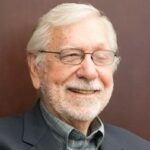 James L. McGaugh
is a Distinguished Professor Emeritus at the University of California, Irvine. He was the founding Chair of the Department of Neurobiology and Behavior and the Founding Director of the Center for the Neurobiology of Learning and Memory. He is recognized for his pioneering investigations of neurobiological systems regulating the formation of lasting memories.
James L. McGaugh
is a Distinguished Professor Emeritus at the University of California, Irvine. He was the founding Chair of the Department of Neurobiology and Behavior and the Founding Director of the Center for the Neurobiology of Learning and Memory. He is recognized for his pioneering investigations of neurobiological systems regulating the formation of lasting memories.
 Daniela Schiller
is a Professor of Neuroscience and Psychiatry at the Icahn School of Medicine at Mount Sinai. She is the director of the laboratory of affective neuroscience. Her research is focused on the neural basis of emotion and social cognition.
Daniela Schiller
is a Professor of Neuroscience and Psychiatry at the Icahn School of Medicine at Mount Sinai. She is the director of the laboratory of affective neuroscience. Her research is focused on the neural basis of emotion and social cognition.
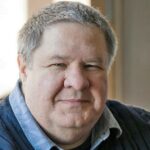 Robert E. Hampson
is a professor of Physiology & Pharmacology, and of Neurology at Wake Forest University School of Medicine. Hampson has built a memory prosthesis that uses electrodes to zap neurons in the hippocampus to improve memory formation.
Robert E. Hampson
is a professor of Physiology & Pharmacology, and of Neurology at Wake Forest University School of Medicine. Hampson has built a memory prosthesis that uses electrodes to zap neurons in the hippocampus to improve memory formation.
